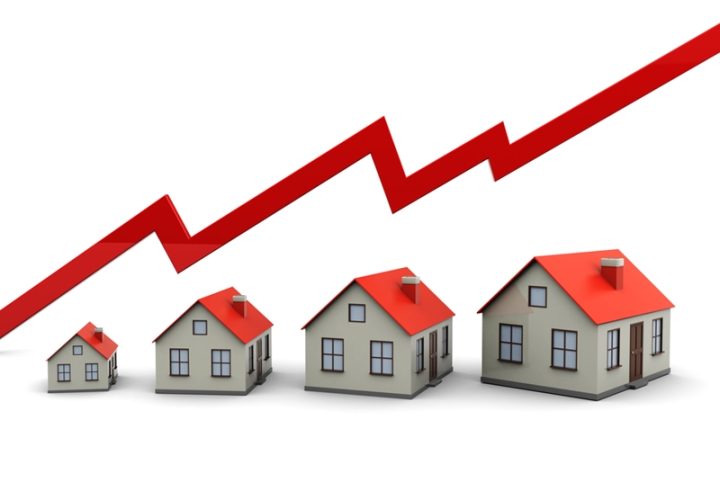
Become a Property Investor and What or Where is on the Move
Have you considered being one of the two million Australians investing in property? But how do you make the right investment property purchase?
Unlike your family house, investing in property is not an emotional decision but rather a financial one. It is important to factor in the known drivers of the property market, supported by data, research and professional help to make an informed investment decision based on your personal circumstances.
Key Considerations
When investing in property the golden rule has always been ‘Location, Location, Location’. However, are there only three location considerations, or are there other considerations as well? Yes, there are:
1. Location:
There are more than three location considerations when selecting the most appropriate investment property:
- Amenities: are there local shops and conveniences that allow people to obtain the essentials easily?
- Transport: Is the location easy to access, are there public transport networks and good road networks?
- Employment drivers: Are there local businesses that offer opportunities for employment within close proximity?
- Lifestyle: Are there activities to do outside with friends and family that attract people to live in the area?
- Public Infrastructure: are schools, healthcare facilities and other critical services available?
2. Population and demographics:
The type and number of people living in an area can influence property demand and values. Most importantly you need to ensure that the type of property you purchase matches the needs of those who live within the area. If families dominate the location, it is likely that a house will be in more demand than a unit and easier to rent.
3. Market trends:
Trends and events can quickly change the demand in some locations. There is no better example of this than the pandemic with many people now looking to relocate to regional and coastal areas. Employers have recognised the need to provide more flexibility including allowing working from home arrangements.
4. Financial returns:
Investors typically invest to seek capital gains or a rental yield to provide cashflow. Investors tend to invest in metropolitan areas hoping for future capital gains. However, in regional areas, the growth in capital gains is not usually as fast or significant, consequently investors look to invest inn properties that have good rental yields. Your interest and decision to invest in metropolitan or regional areas will be influenced by your financial goals and the type of financial return you seek. While selecting the correct property investment is important, equally important is ensuring that the property fits your personal circumstances, financial objectives and within your financial means.
Property investors should take advantage of the information available to them and seek advice from a finance specialist to make informed property investment decisions.
A good property investment decision should provide steady cash flow, tax advantages and capital gains in the long term.
| Book a chat to find out more |
On The Move
The positive outlooks for the Brisbane, Adelaide and Perth property markets have been reinforced by data suggesting the exodus of people from Sydney and Melbourne is continuing unabated.
In the year ending 30 November 2021, Melbourne recorded a net migration of -54 per cent, up from -58 per cent in the year ending 31 October 2021. By comparison, Melbourne was recording 3 per cent positive net migration in January 2020, with more people planning to move in than out pre-pandemic. At its worst, the Victorian capital recorded -64% in September 2021.
In Sydney, net migration is sitting at -47 per cent (year ending 30 November 2021), which is an improvement from August where that number was -58 per cent, with Sydneysiders looking to move to smaller cities like Brisbane and Perth in the midst of the lockdown.
The new data shows Brisbane as the most popular city with a positive net migration of 78 per cent in the year ending 30 November 2021 (while down from 94 per cent on the previous month).
Queuing for Queensland
Queensland’s south east corner stretching to the Sunshine Coast, Toowoomba and Gold Coast has seen the most action in terms of migration, especially from Melbournians.
This is similar in Perth, where the volumes were always typically quite low or seasonal but this has seen a turn around.
With this influx of migrants comes greater stress and pressure on local infrastructure.
Considering the large inbound moves we’ve seen to Brisbane, Sunshine Coast and the Gold Coast, we can expect the connectivity between these regions, and also areas like Bundaberg, Rockhampton, Townsville and Cairns, will improve as more people work from home and commute as needed.
Dr Elin Charles-Edwards of The University of Queensland said decentralisation of Australia’s population away from cities to regional Australia has been a longstanding government policy objective.
“Since March 2020, the pandemic has expedited what decades of decentralisation policy has aimed to achieve, namely Australians migrating internally to regional areas.
“The potential positives to decentralisation include lower congestion in cities and economic growth in regional Australia but the challenge of increased demand for housing and services in regional areas includes preserving the very lifestyle that makes regional Australia attractive in the first place,” Dr Charles-Edwards said.
Adelaide allure
Low vacancy rates, a lack of listings and strong price growth in Adelaide has attracted an an influx from Sydney and Melbourne.
While South Australia’s regional areas leak people to the city’s suburban fringes, returning expats were also pouring back into the City of Churches.
Lord Mayor of Adelaide Sandy Verschoor said expats from overseas and across Australia have been drawn back to Adelaide thanks partly to its green spaces and central parklands that have taken on a new importance during lockdowns.
“The city is consistently rated in the top 10 cities in the world to live thanks in part to how safe it is to live here.”
Australian Bureau of Statistics data updated last week shows Greater Adelaide is now home to 77.8 per cent of the state’s population, while almost all of the major growth areas outside of the city are within a 90-minute drive.
What about WA?
In Western Australia, jobs are driving the economy, a buoyant property market and migration into the state.
WA’s unemployment rate has declined to its lowest since July 2012. The ABS Labour Force report for October showed WA’s unemployment rate fell from 4.1 per cent to 3.9 per cent, as full-time employment grew.
WA was the only state to experience a fall in the unemployment rate, which is now at least 1.2 percentage points lower than any other state.
|
|




